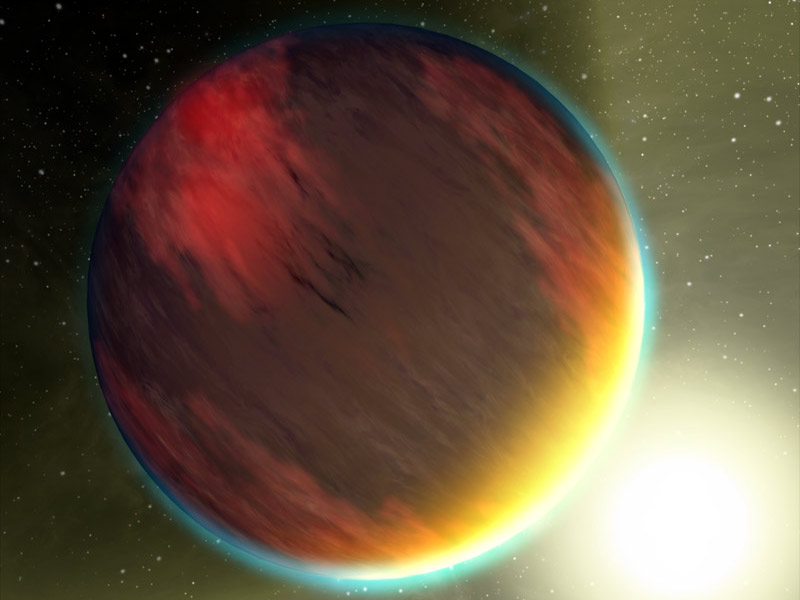Atmospheres Detected on Two Extrasolar Planets

Explanation:
Do extrasolar planets have water?
In an attempt to find out, the orbiting
Spitzer Space Telescope
made detailed observations of the atmospheres of two planets
that orbit stars other than our Sun.
Unfortunately,
water vapor
was not detected in either exoplanet.
Spitzer watched star systems
HD 209458b and
HD 189733b
closely in infrared light both before and after the parent stars eclipsed their known
planets.
By comparing
eclipsed and uneclipsed spectra very closely,
astronomers could deduce bright light-emitting atmospheric gasses
that were being blocked during eclipse.
Were water vapor one of these atmospheric gases, a new indication that
life might exist outside of our
Solar System
would have been found.
The planets being analyzed are known as
hot Jupiters --
they have sizes close to
Jupiter but orbits closer to the distance of
Mercury.
The
above illustration shows an artist's depiction of one of these dry worlds.
Although no water vapor was detected this time, the techniques of measuring
exoplanet
atmospheres are quite promising, and the search for distant water and other
biomakers
is just beginning.
Authors & editors:
Robert Nemiroff
(MTU) &
Jerry Bonnell
(USRA)
NASA Web Site Statements, Warnings,
and Disclaimers
NASA Official: Jay Norris.
Specific
rights apply.
A service of:
LHEA at
NASA /
GSFC
& Michigan Tech. U.

